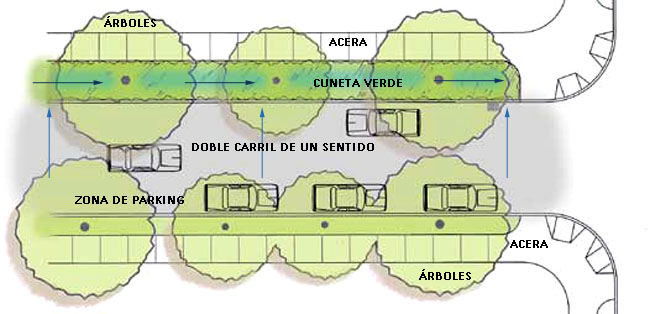-
Phone Number
-
Email Address
Cities currently require a lot of water to be functional. And with the growth of the urban population the Municipal water demand is estimated to soar 40% by 2025. In addition, as a consequence of the rapid and disorganized urbanization process as well as planning "poor" urban , problems are already appearing in regarding the availability and quality of water inside and outside of the cities.
Remember that from the article on the anatomy of the cities and their habitability, we learn how to understand the blocks, blocks and the cellular urbanism of cities to improve the health of the inhabitants.
Content menu:
Faced with these worrisome forecasts, we must bear in mind account the need of the population to live in cities healthy with green spaces that make them more comfortable. So the dilemma arises as to whether this will be possible without further increase the external contributions of water.
The reality is that it has already been shown in some cities that yes you can, but with more water management sustainable than we generally use and applying urban planning techniques sustainable .
What is usually done is to bring water from more and more sources remote, with added spending on infrastructure and the impact in the environment that this entails. And, paradoxically, the precipitation water, we expel it quickly from the urban environments, increasing the necessary infrastructures and also producing a negative footprint in the environment natural.
So, not only are the waters wasted urban storm sewers , but are dumped polluted into the half. In addition, other problems arise, including the overexploitation of water resources or the greater vulnerability to flooding.
In order to solve these inconveniences, there are Sustainable Urban Drainage Systems (SUDS), which involve redesigning the urban landscape imitating the nature in the reproduction of the hydrological cycle .
Unlike drainage techniques conventional (sewer), many of the SUDS are installed above the surface. Besides to be visible, in many cases they have a multifunction to the citizen, so they must be perfectly integrated in the cities.
This requires the involvement of several agents, public administration, urban planners, engineers, landscapers... and of course, the citizens.
Being an integrated part of the urban landscape, it becomes its inclusion in urban planning is inevitable; given that, using some drainage techniques sustainable , it can be achieved, apart from a more efficient management of runoff water , a greener and more comfortable space for the citizen.
In this way, urban planners have to contemplate the water rainwater as a resource to be used instead of a residue to evacuate, both in the new sustainable development plans as in redevelopment. For what it will be recommended follow the following principles:
Types and projects of SUDS (Urban Systems of Sustainable Drainage) there are many, structural, non-structural, superficial, underground, that manage runoff locally, regionally, etc……
Here we describe a few examples urban spaces that, due to their aesthetics and functionality, which In addition to improving runoff water quality, they offer a playful space, reduce the “heat island” effect and increase the variety of animal and plant species in the cities.
Green roofs are multilayer elements, placed on roofs and rooftops, on which vegetation grows. In Depending on the type of plants they support, they can be intensive, extensive or semi-intensive. They offer a medium regulation of the volume and peak flow of rainwater and good water on the water quality.
Green or vegetated ditches are depressions with vegetation, long and shallow, with a slight slope longitudinal. There are several types, depending on the type of street where they are located they may be more or less wide.
They help separate pedestrian areas from the road and can transform a street making it more attractive for the walk. They seek a medium regulation on the volume and peak flow of runoff and good on water quality.

They are small bioretention areas where the runoff from adjacent impervious areas. Have a slightly depressed permeable soil to accumulate and infiltrate the water and are characterized because they are full of vegetation, seeming to the naked eye gardens. In addition to helping improve the quality of urban runoff water, increase biodiversity within cities .
Remember that we have two interesting articles on how make urban gardens at home and green walls on the wall for housing, more for the home.
Visually they do not differ from waterproof pavements common, but unlike them, help greatly measure to reduce runoff . And combined with other more aesthetic techniques, such as filter planters or green channels, are a very good option in the remodeling of streets or the construction of new roads.
Although permeable surfaces may not be as flashy like other SUDS, there are different types of pavements of different formats and colors with which to create new and improved spaces for pedestrians.

These are just some of the examples of SUDS we can found in the so-called green streets , streets characterized by using natural processes in stormwater management “in situ”; but they are not the only ones, you can also use green channels or the Filter planters to incorporate the hydrological cycle in the cities and incidentally improve the urban landscape and the quality of life of city dwellers.